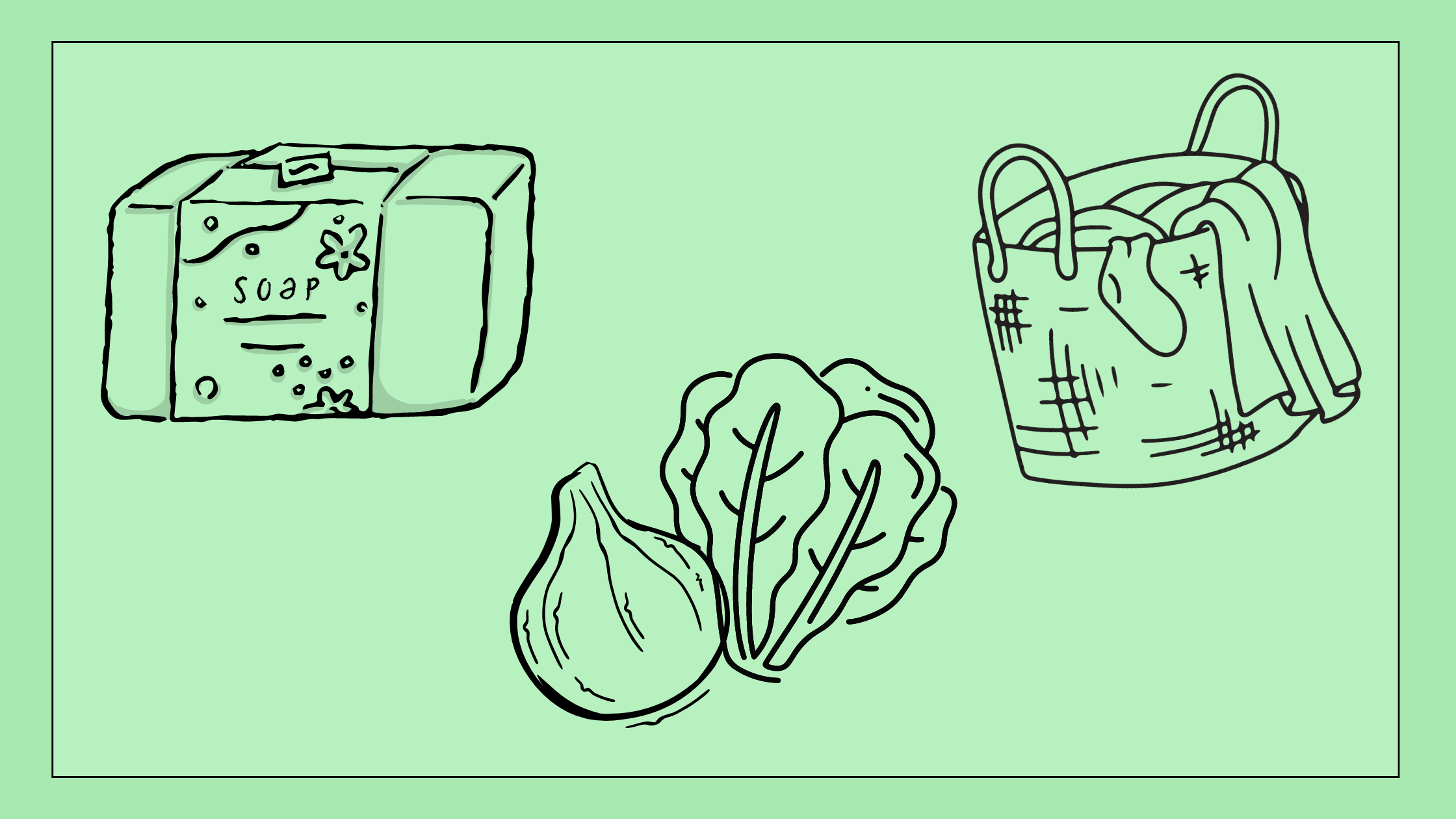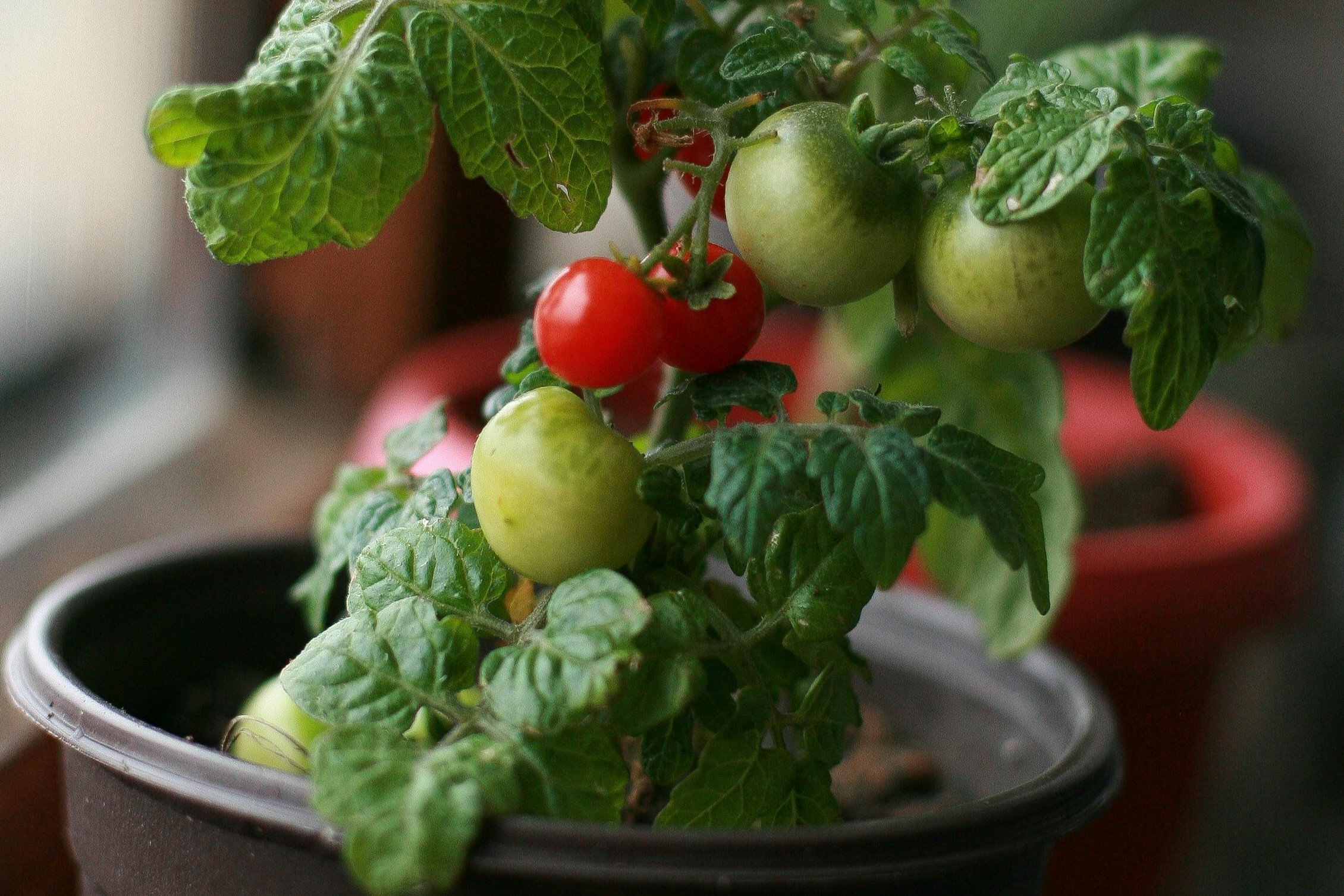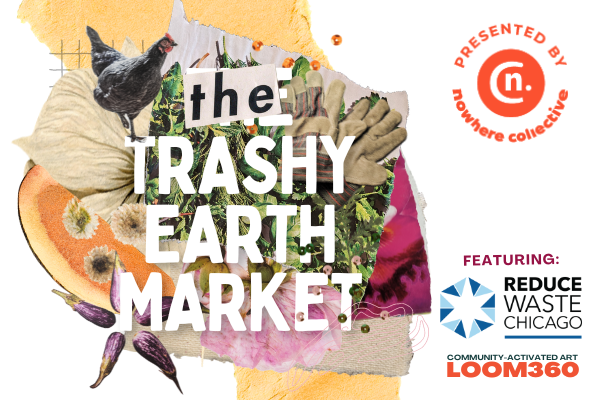Here Are 8 Powerful Ways to Reduce Plastics That You Might Not Have Tried Yet
In honor of Earth Day 2024, we’re going to be talking about the environmental risks, goals, and actions you can take related to this year’s EarthDay.org theme: “Planet vs. Plastics.”
The EarthDay.org organization, which has been spreading environmental awareness every year since the international holiday’s establishment in 1970, is using this year to call for 60% of all plastic production to stop by 2040.
Not only does the production and disposal of plastics contribute to 3% of all global emissions, it also makes up 80% of all ocean debris, severely endangering the ecosystem and putting human health at risk, too.
Chicago Environmentalists supports the removal of plastics and other waste through our Cleanup Club Chicago efforts - a volunteer group that collects litter off the neighborhood streets and parks of Chicago - which aligns with our larger goal of waste reduction, especially when it comes to plastics.
One of the ways we are working on waste reduction is through our affiliation with the Coalition for Plastic Reduction, which advocates legislation to reduce the amount of single-use plastics for sale and in production in Illinois.
And while you likely already know about the typical ways to reduce plastic use: carry a tote, don’t drink from plastic water bottles, buy foods with less packaging, we invite you to take it a step further, and try some of these plastic-reducing methods you might not have tried yet!
1) Shop at these zero waste stores in Chicago
Photo by Anna Tarazevich on Pexels
Thrifting is a well-known alternative to wasteful shopping habits. But did you know of these stores in Chicago that are dedicated to creating no-waste, long-lasting alternatives to most unsustainable products?
On our website, we have a resource page dedicated to all the shops in Chicago that are truly zero waste, and are stocked with products that will not only make your plastic reduction journey easier, but a lot more fun!
2) Make the switch to bar soap
You probably already know about this one, but you might be unaware of just how much disposable body wash bottles contribute to plastic pollution.
It is estimated that over two-thirds of Americans use body wash in plastic bottles, which (by an approximation of 6 bottles of body wash per year) amounts to 1.4 billion plastic bottles of body wash ending up in landfills or the ocean every year.
As tempting as it is to buy those fancy rhombus-shaped soap bottles at Bath & Body Works, you can help reduce plastic use tremendously by opting for bar soap instead. As long as you’re buying from the right brand, bar soap is just as effective, if not healthier for the body, than liquid hand soap and body wash.
Not only that, but you can easily find unique, high-quality, handcrafted soaps at local markets, and support small businesses in the process.
However, if you can’t resist liquid soaps, reduce the amount of bottles you go through every year by reining in how much soap you use, or bulk-buying liquid soap and refilling your existing dispensers, plastic, glass, or otherwise. If your zero waste shops have the option, you can also get your body wash containers filled in-store.
3) Grow the cooking staples at home
Photo by Bacho Nadiradze on Pexels
(Author’s note: it’s easier to grow food outdoors, of course, but since a lot of us live in apartments, the resources below reflect that!)
Unless you readily have access to plastic-free or no packaging at a local farmers’ market for all your grocery trips, chances are you’re still at the mercy of buying fruits and vegetables at your nearest, most convenient grocery store.
Not only is this plastic wrap contributing to plastic pollution, but is also one likely culprit in the massive problem that is food waste in the US. Trivial expiration dates on packaging and limited flexibility in choosing portion sizes are likely factors in plastic packaging doing even more harm to the environment beyond just being plastic.
But luckily, there are actually quite a few fruits, vegetables, and herbs that can be successfully grown at home, even in indoor environments. Sometimes there isn’t even a need to go out and buy seeds; vegetables like tomatoes and green onions already have their own plant-able seeds and roots!
Bonnie’s Plants has a great blog featuring how to get started with indoor planting and what kind of vegetables you can grow in an indoor environment. Vertical gardens in this setting have also become increasingly popular.
4) Use laundry habits that reduce plastic shedding
Acrylic, polyester, nylon, and in general low-quality, unnatural fabrics are all prone to shedding microplastics in the wash, which make their way to the ocean where the wastewater is ultimately dumped. Clothes don’t just contribute to plastic pollution, but detergents do, too. Traditional liquid detergents come in bulky plastic bottles (which are rarely recycled, despite what advertising might tell you) and detergent pods are balls of plastic that will quickly turn into microplastics in the wash.
When it comes to clothes, simple laundry habits like washing with cold water, washing your clothes less (as not every item of clothing will need a wash after one use), hang-drying clothes, and using microplastic-catching laundry bags can all help reduce the amount of microplastics going into the ocean. Eliminate the need for fabric softeners in plastic containers by using white vinegar in your washer, and/or wool balls in the dryer instead.
There are also alternatives that bypass microplastics altogether, including liquid detergent when you opt to refill your existing detergent bottles instead of repurchasing, and powder detergents, which are completely plastic-free in substance and packaging.
5) Visit the Reduce Waste Chicago pop-ups!
One of the biggest problems with plastic is that when it can be recycled, traditional waste management facilities are unequipped with the tools to do so. Between that and households tending to skip the necessary steps in responsibly disposing of plastic products, the opportunity to reduce the environmental impact of plastics is sorely missed.
But in Chicago, there’s an organization dedicated to changing that narrative, and providing a means to an end for these difficult-to-recycle plastics. Reduce Waste Chicago hosts monthly pop-ups and other eco-inspired events to reuse and repurpose plastics that are otherwise thrown in the trash.
An extensive, detailed list of the kinds of plastics (and other waste) they accept is available on their website.
6) Support restaurants who are Shedd Plastic Collaborators (Let’s Shedd Plastic)
Frankly, the most effective way to ensure you’re not using plastic when you go out to eat is to not eat out at all. But who could possibly resist the allure of the hundreds of critically-acclaimed Chicago restaurants that offer a slice of every kind of cuisine imaginable?
The good news is, many of these restaurants are taking the pledge to reduce plastic takeaway packaging. The Shedd Aquarium, with marine animals at heart, is working to make a difference in the Chicagoland area by reducing the need for plastics, and restaurants are one place to start.
The aquarium has partnerships with restaurants all across the city to do their part in reducing the need for plastics. You can check out the full list of them here. Supporting these establishments with your patronage is one of the many ways you can support a larger, systemic shift towards reduced plastics in day-to-day life.
And, if you’re looking to go for the full sustainable restaurant experience, we have a resource dedicated to those restaurants here.
7) Move away from single-use feminine products
Feminine products have had the unfortunate reputation of being inaccessible to all women, grossly taxable, and in some cases, unsafe for the human body. Which is why it is even more unfortunate to say that single-use feminine products are also terrible for the environment.
Between the production of single-use, plastic-wrapped, chemical-infused tampons and pads and the often poorly-managed disposal of them, these products contribute significantly to carbon emissions and ocean waste. Over 200,000 tons of plastic waste per year can be attributed to single-use tampons and pads.
While every woman is different, and has varying levels of comfort with different feminine products, there are not only safer, but more cost-effective alternatives to single-use feminine products that are much better at reducing plastic consumption.
“Sustainable” period product options such as menstrual cups are not only plastic-free, but can last for years, replacing your monthly period expenses with a one-time purchase and offering a safer alternative to the single-use options.
8) Help stop the plastic production before it happens
Photo by Ocean Cleanup Group on Unsplash
Sometimes, the best way you can reduce plastic from your own home is to support the people who are taking the fight outside and to the front steps of businesses and legislators who stand to make the most monumental impact.
Show support by signing petitions, like those of the Plastic Pollution Coalition, and donating to organizations that are working hard to stop plastic production and achieve the legislation needed to enact a cleaner, plastic-free future. We also often post opportunities to sign important witness slips for bills that could reduce plastic and ban styrofoam on our Chicago Environmentalist Facebook group.
ARTICLE WRITTEN BY
Sophie Shulman, Blog Manager & SEO Specialist for the Chicago Environmentalists.







